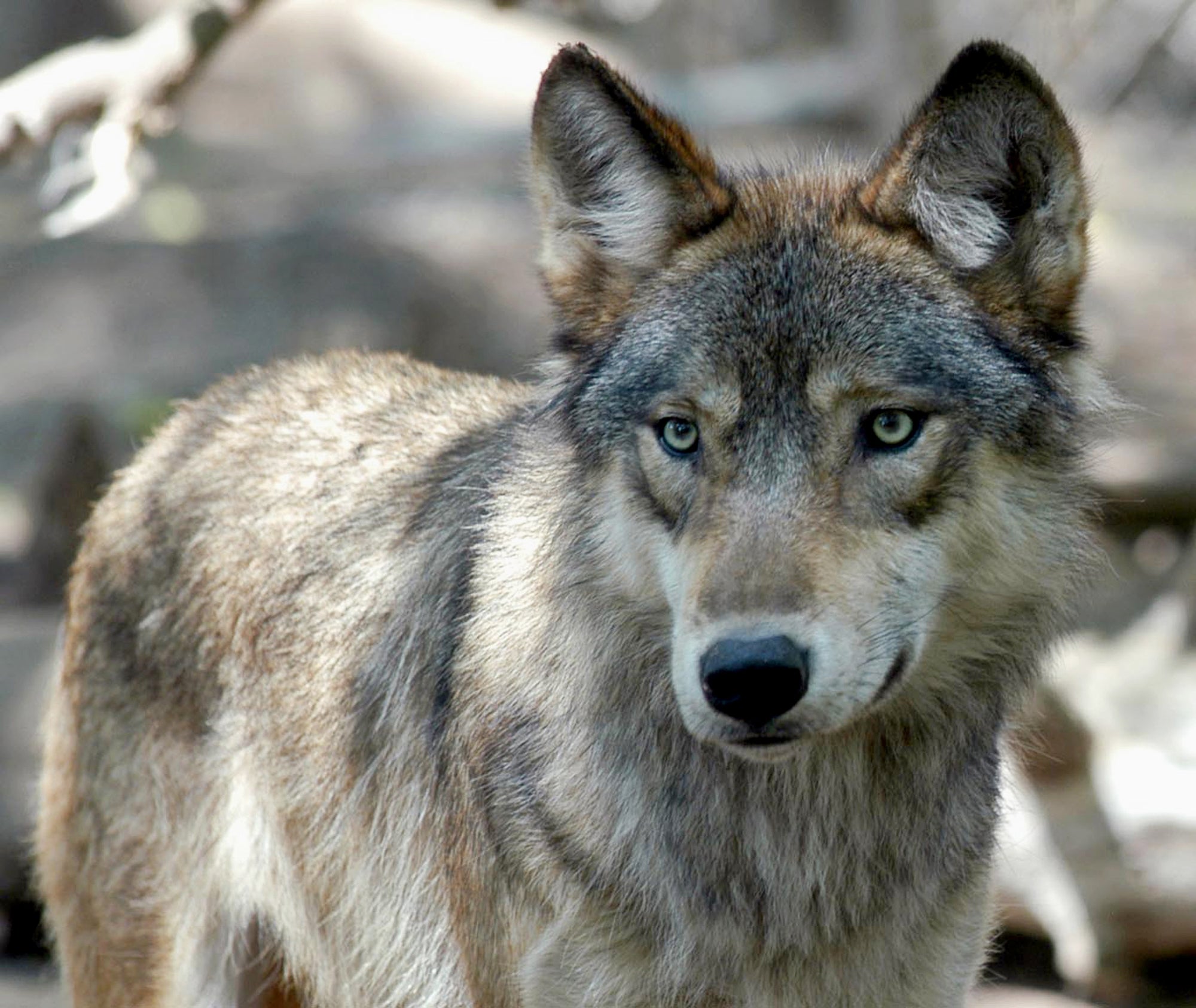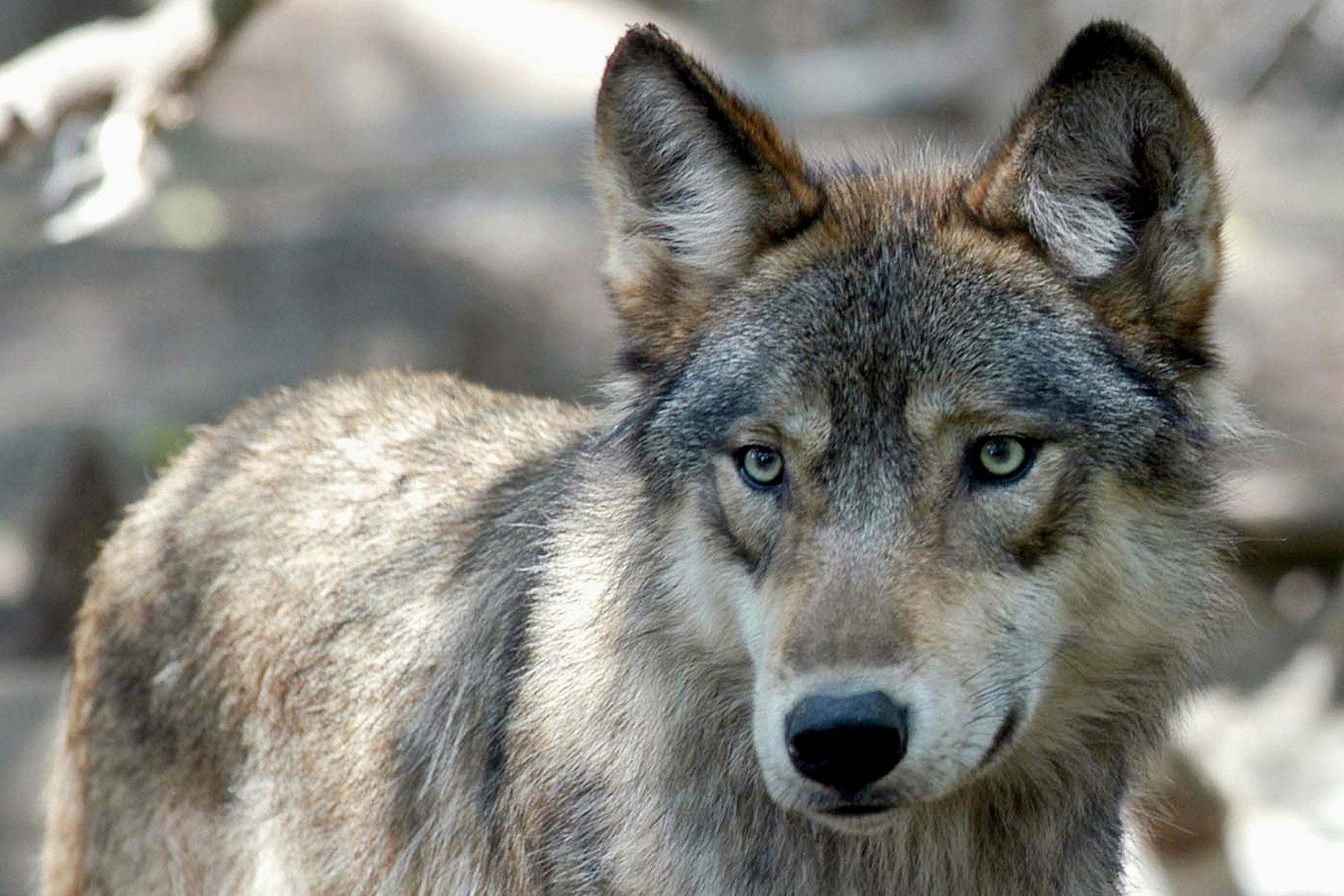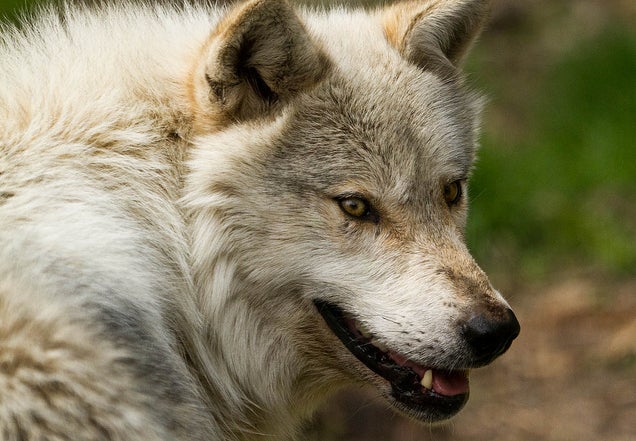Farmers, ranchers, hunters and wildlife advocates filled an auditorium Tuesday night in Brainerd, Minnesota to give passionate testimony for and against a proposal to remove federal protections for gray wolves.
The hearing was the only opportunity, anywhere in the country, for members of the public to give input in person on the proposal by the U.S. Fish and Wildlife Service to take gray wolves off the endangered and threatened species list — which, among other things, makes it illegal to kill a wolf unless it’s threatening a human.
De-listing gray wolves would turn management of wolf populations over to states, potentially making them subject to hunting and trapping. Only the Mexican gray wolf would remain under federal protection.
Stay informed on the latest news
Sign up for WPR’s email newsletter.
Federal officials say they want to remove gray wolves from the endangered species list because they no longer consider the animals endangered. During their 40-plus years of protected status, gray wolves — once almost extinct in the lower 48 states — have made a dramatic recovery. There are now more than 6,000 gray wolves, in nine states. Minnesota’s gray wolf population alone is estimated at more than 2,650.
“The reason we keep species listed is because we want to protect species from going extinct. Wolves are not even close to that,” said Lori Nordstrom, who works for the U.S. Fish and Wildlife Service, which manages the endangered and threatened species list. “They’re doing very well in the Great Lakes region, and they’re also expanding out west.”
But opponents of the proposal to remove the wolves from federal protection say the move is premature. They argue that, while wolf populations in Minnesota, Wisconsin, Michigan and the northern Rocky Mountains have rebounded, gray wolves haven’t fully recovered their historic range. And they argue that wolves’ recovery in areas like the Pacific Northwest and the southern Rockies is just beginning.
One by one Tuesday night, they addressed the crowd and the U.S. Fish and Wildlife Service officials gathered in the auditorium of the Franklin Arts Center: Farmers and ranchers and conservationists and hunters and wildlife activists and environmentalists and elected officials.
Shirley Nordrum, a University of Minnesota Extension educator and member of the Leech Lake Band of Ojibwe based in nearby Cass Lake, talked about how Ojibwe people consider the wolf as a brother. She argued that, because wolves have recovered only a fraction of their historic range, the U.S. Fish and Wildlife Service’s estimation that the population is recovered is flawed.
Peter David, a wildlife biologist with Great Lakes Indian Fish and Wildlife Commission, said that wolves’ comeback has brought balance and healing, but can’t be judged by population numbers in a few states.
“We’ve come a long ways, but what all has been accomplished is not secure, nor is it enough,” David said. “The recovery of wolves on this broader landscape cannot be measured just by what we witness in our backyard,”
But supporters of the federal proposal say wolves no longer require federal protection, and more state management is needed to keep their numbers under control. Representatives of hunting groups said wolves are hurting big game populations.
John Coulter of Tracy, Minnesota, spoke on behalf of Big Game Forever, an organization based in Utah that counters “threats to wildlife, sportsmen’s rights, our way of life.”
Coulter said wolves are destroying hunting traditions in some places by reducing game populations.
“When there’s nothing to hunt,” he said, “people do not hunt.”
Farmers and ranchers talked about losing calves and pets to wolf predation.
Minnesota state Rep. John Poston, R-Lake Shore, represents Cass, Todd and Wadena counties at the Legislature. He talked about the impact on farmers and ranchers who have lost livestock to wolves.
“That’s a huge financial impact to that family, that farm,” he said.
John Apple, of Aitkin County, agreed.
“It’s only a matter of time before it’s going to be hard to control them if the state isn’t allowed to do it,” he said.
Tuesday’s hearing is the latest in what has been a lengthy legal battle over gray wolves. In 1974, the animal was put under federal protection under the Endangered Species Act.
By 2007, the U.S. Fish and Wildlife Service had removed the gray wolf from the endangered species list in the western Great Lakes states. But a year and a half later, a federal judge placed the wolf back under endangered species protection.
In 2009 and 2011, wolves were removed from the endangered species list again. Minnesota moved quickly to hold hunting seasons, in 2012, 2013 and 2014. But judges soon returned the wolf to federal protection after legal challenges.
Today, gray wolves are listed as threatened in Minnesota and as endangered throughout the remainder of the United States and Mexico outside of the northern Rocky Mountains. Gray wolves in the northern Rockies were removed from the endangered species list in 2011 and 2012.
Environmental groups have pledged legal challenges to any action to eliminate protection for wolves.
A final decision on whether the gray wolf will remain on the endangered species list will come after the public comment period closes on July 15. The deadline is March 2020.
This story originally appeared on MPRNews at https://www.mprnews.org/story/2019/06/26/hearing-on-wolf-protections-draws-large-passionate-crowd-brainerd.




